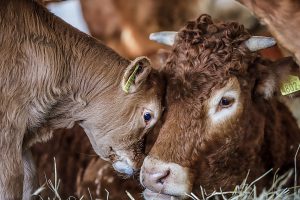That livestock animals cause problems is not because of their individual behaviour but because of their immense numbers. There are simply too many of them. With technical tricks, as we see in other industries, farmers try to reduce individual emissions per animal. Low-protein food, a low-emission floor, a barn with an air washer. But a cow or a pig is not a car you can run on ‘clean’ petrol. Or that you can put a particulate filter in. In arguing for technical measures, the industry ignores the fact that they are working with vulnerable living beings. The Dutch Safety Board’s report shows that a low-emission floor increases the risk of manure gas explosions and air scrubbers speed up the spread of fire in a barn fire. Veterinarians warn that low-protein feed leads to reduced resistance and the health of calves will deteriorate. The animals themselves would never choose this solution.
When are we going to listen to key stakeholders in the livestock industry? Pigs bored to death on a concrete floor show this by nibbling their housemate’s tail. But instead of listening to this expression of frustration, the tail is simply cut off. Knowledge about animal health has been increasing for decades, while the lifespan of the dairy cow is only decreasing. Cows, pigs, chickens and goats in their overcrowded stables have been telling us for a long time that the limit has been reached. Only now that humans themselves are getting inconvenienced by the sheer volume of animals being kept, is there a chance that the animals will finally be listened to. We cannot achieve the dust targets by mere technical solutions. We must redesign the animals’ habitat from their perspective. We must realise that these animals are very good at letting us know what they want as well as what they don’t want. And it is time we started listening to this.



